Site menu:
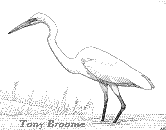
February 2013 Newsletter
Cheshire and Wirral Bird Report 2011.
January Bird News.
Forthcoming Events.
Latest Newsletter.
Cheshire and Wirral Bird Report 2011.
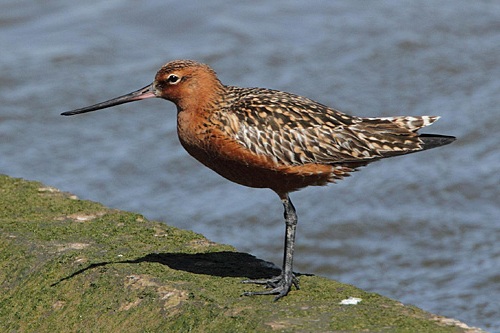
featured in the Bird Report. © Keith Scovell, keithscovell.blogspot.co.uk.
We’re
delighted to say that the annual Bird Report for 2011 will be available
from January 2013. The eye-catching colour front cover this
year
is of a Yellow Wagtail, an increasingly scarce migrant to Cheshire and
Wirral. The 160 pages of text includes 78 maps, graphs and
tables, and 12 beautiful illustrations from two different
artists. As usual, the colour map of the county forms the
centre
spread of the Bird Report. A total of 19 colour photographs,
which best capture some of the highlights of the year, are spread over
seven full pages.
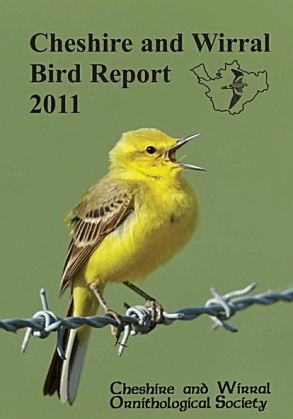 The
Bird Report is full of interesting articles:
The
Bird Report is full of interesting articles:
• A fascinating article reports on 25 years of Black-necked
Grebes at
Woolston Eyes, one of the most important wetlands in the north of
England, and a mecca for birdwatchers wanting to see so many
Black-necked Grebes in their fine summer plumage.
• The rarity highlight of the year was the discovery of a
superb
Red-flanked Bluetail on Hilbre. Although it was only seen for one day,
many people enjoyed this first for Cheshire and Wirral and also first
for north-west England!
• Another article
recalls the excitement of finding a Blyth’s Reed Warbler at Hilbre; the
first record for the island and only the second for Cheshire and Wirral.
• Presented are the results of the CAWOS 2011 Raven Survey,
which aimed
to determine the total number of breeding pairs of Ravens in Cheshire
and Wirral.
• With data now spanning 18
breeding seasons, the Breeding Bird Survey (BBS) provides an
opportunity to quantify some of the more significant changes in
Cheshire and Wirral populations.
• After
hearing reports of large numbers of migrant Dunlin and Ringed Plover at
Hoylake, an ‘obsessive counter’ found a Broad-billed Sandpiper roosting
on a muddy area – just rewards.
• Another
article speculates on the occurrence and identification of migratory
eastern race Jackdaws, after coming across a large mixed corvid flock
in the Chester area.
• Finally, a tribute
to Dr Reginald John Hall Raines, who was an outstanding ornithologist
of the post-war generation.
All the ‘regulars’ are there:
‘Weather and Bird Review of the Year’; the full ‘Systematic List of
Birds Recorded in Cheshire and Wirral during 2011’, including ‘Category
E Species’; ‘Early and Late Dates for Migrants’; ‘BBRC and County
Rarities Decisions’; ‘Ringing Report’; ‘Chairman’s Review’; and
finally, advice on the ‘Submission of Records’, including rarities.
Last,
but not least, we have again included a Species Index at the back to
help you quickly look up your favourite species.
The
Bird Report is free to Cheshire
and Wirral Ornithological Society
members (ordinary membership costs £12), otherwise it costs £7.50 +
£2.00 p&p and copies are available from:
David Cogger, 113 Nantwich Road, Middlewich, Cheshire, CW10 9HD
Tel: 01606 832517 Email: davidcogger@cawos.org.
Top of Page
January Bird News
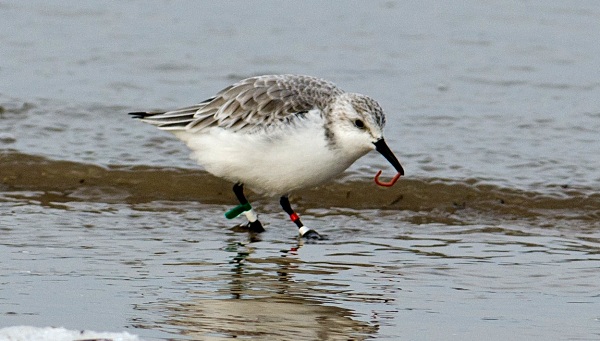
I make no apologies for showing four photographs in this section all of waders on Hoylake Shore over a period of just four days! Saturday January 12th was the day of the High Tide Birdwatch at Hoylake and it was an outstanding day with at least 200 birders enjoying the spectacle of 25,000 waders pushed in by a big high tide which included 1,200 Sanderling - one of the highest ever January counts for this species on the Dee Estuary. If Saturday was outstanding then Sunday was even better with the higher tide pushing the birds that much closer, for about 30 minutes half the Knot flock aerial roosted overhead which was an amazing sight in itself. Then came Monday which was simply astonishing, the birds were so close to the end of King's Gap you could almost touch them, unlike the previous day the birds stayed mainly on the sand and were surging backwards and forwards like breaking waves. Whilst all this was going on us colour ringed wader nuts were having a field day with a total of seven ringed Sanderling, seven ringed Knot and two ringed Dunlin. We already have feedback for the Sanderlings: three were ringed in Greenland where they breed, three were ringed in Iceland on migration and the other on the Waddensee. There are several fascinating stories connected with these birds and I'll be writing an article about them in the next few months.
One of the reasons why this weekend was so successful was because the Dee Estuary Voluntary Wardens made a special effort to reduce disturbance putting various signs out on the beach, as a result we didn't get a single human made disturbance in three days - for which many thanks.

see www.fromthemuddybanksofthedee.com blog.
Knot numbers have been very high all winter, max counts this month were 35,000, on Jan 2nd counted from Hilbre heading towards Hoylake, and 48,000 on their feeding grounds on Dawpool Bank, Thurstaston, on the 9th. To put that latter count into perspective there have only been four Wetland Bird Survey Counts for the whole of the estuary of 45,000 or more since 1970 when the counts started, and only one higher which was of 52,000 on Hoylake Shore in 2001. But I have heard rumours that the WeBS count for December 2012 was even higher, perhaps as high as 60,000 and included c20,000 at Hoylake and c40,000 at Point of Ayr - but this is as yet unconfirmed.
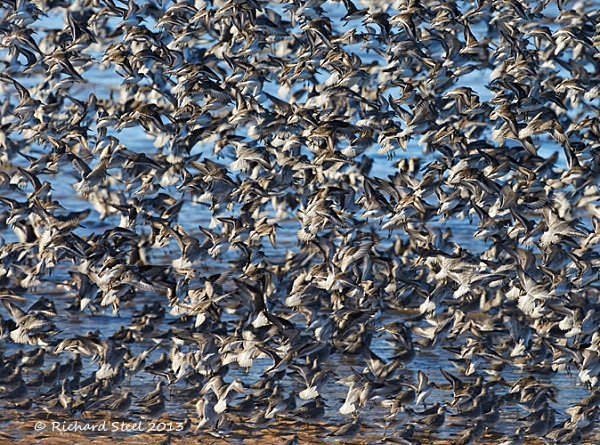
The high tides which produced such a good roost at Hoylake also produced some great birding on the marshes with three Great White Egrets, five Short-eared Owls and 3,200 Pink-footed Geese, all on the 13th. That latter count is by far the highest count of 'pinkfeet' on the marshes since at least the 1920s (see Geese on the Dee Estuary Article). There have been at least five Hen Harriers including three 'grey' males, a stunning sight and two birders were lucky enough to see all three in the air together on the 14th off Burton Point, according to my records that is the highest number of males since the winter of1985/86.
Purple Sandpipers reached 21 at New Brighton and, more unexpectedly, a Ruff joined the flock on the Marine Lake pontoon, seen and photographed on the 15th, and again seen by myself on the last day of the month.
The end of the cold weather was marked by strong south-west winds which resulted in some good sea-watching including three Gannets, a Great Northern Diver, 79 Red-throated Divers, a Velvet Scoter and six Little Gulls. 32 scaup were off Hilbre on the 20th.
There were six reports of Waxwings, max 20 at Greenfield on the 27th.

Richard Smith.
What to expect in February

It's has been a very good winter for Knot with numbers around the 40,000 plus mark and we would expect high numbers to continue. As in January we can expect some spectacular high tide roosts at West Kirby and Point of Ayr, and in particular Hoylake. Numbers of Purple Sandpipers should also be relatively high with over 20 at both New Brighton Marine Lake and Hilbre. Along north Wirral we can get many thousands of gulls with 10,000 Herring Gulls alone and who knows how may rarities among that lot! There should definitely be a few Mediterranean Gulls around and they will be starting to acquire their summer plumage.
Other signs of the coming spring will be singing Chiffchaffs and Skylarks with perhaps one or two Cetti's Warblers along with drumming woodpeckers and various woodland birds in song. Last year the first Sand Martin had arrived by the end of February!
Not to forget Waxwings of course, it is likely that numbers will increase again as they start to make their way north again.
Top of Page
Forthcoming Events
February Highest Spring Tides (Liverpool)
Also
see Tides
page.
11th February, 11.45hrs (GMT), 9.9m.
12th February, 12.26hrs (GMT), 9.9m.
Forthcoming Events
Organised by the Wirral
Ranger Service , Flintshire Countryside Service and/or the
RSPB:
All these events and walks have bird interest, even those not
advertised specifically for birdwatching. No need to book for these
events unless specified - please check below.
Also see 2013 Events Diary.
The Visitor Centre at Thurstaston overlooks the internationally important wetlands of the Dee Estuary.
We will be marking World Wetlands Day with a day of activities at the Centre including a slideshow at 11.00am and a guided walk at 12.30pm.
There will be experts on hand to answer bird watching questions and there will be stalls with information about local groups.
Warm waterproofs, strong boots and binoculars are recommended for the guided walk.
For further details telephone ring 0151 648 4371. No need to book.
Sunday 3rd February amd 3rd March:
Skydancers at Parkgate - 12 noon until dusk.
Skydancer is an exciting new four-year project aimed at raising awareness and promoting the conservation of hen harriers in the north of England.
The Dee Estuary is a vital wintering ground for these amazing birds and is the best place to see them from October through to March.
Most people have never seen a hen harrier, but once seen it is rarely forgotten. This bird is a beautiful, agile hunter, and its aerobatic sky dances are among the most awesome spectacles in nature.
Unfortunately, with only a handful of pairs still breeding successfully in England, the hen harrier is currently a species on the brink.
Come along to Parkgate to find out more about the hen harrier story and what you can do to help save hen harriers before it's too late!
Look for the RSPB Love Nature marquee along the main promenade at Parkgate where friendly staff and volunteers will be with telescopes and binoculars plus family activities, free information and more: http://www.rspb.org.uk/skydancer/
Directions: The "Donkey Stand" opposite Nicholls Ice-cream shop on The Parade (B5135), Parkgate, Cheshire.
Sunday 3rd February - 10:30am - 12:30pm, Winter Birds at Royden Park.
Join the Ranger and spend some time looking at our resident winter birds and gaining some hints on feeding and nest box locations.
Meet at Coach House/Court Yard at Royden Park.
Sorry no dogs.
For further enquiries ring 0151 677 7594.
Tuesday 12th February - 8:00am - 4:00pm, Hilbre Island - Purple Patch.
Each winter Hilbre Island plays host to a small troop of Paurple Sandpipers.
These small waders are a real highlight of Hilbre's winter avifauna and are the target species for this guided walk across to the islands.
We will also look for other Hilbre winter specials like Brent Geese, Divers and Grebes.
There will also be a short slideshow and talk in the day room.
This is a full day trip, staying on the island over high tide.
Places are limited so booking is essential, please ring 0151 648 4371.
Saturday 2nd March, High tide Birdwatch, Hoylake.
11:00 am start - high tide 13.30hrs 9.3m.
You will discover why Wirral’s foreshore is an internationally protected site when you join the Dee Estuary Voluntary Wardens, Coastal Rangers and the RSPB on this winter birdwatch at Hoylake. Dress warmly and bring binoculars if you have them.
No need to book.
Meet at the bottom of Trinity Road, North Parade, Hoylake promenade.
Please ring (0151) 648 4371 if you need more information.
Saturday 2nd March, Guided Walk at Point of Ayr, Flintshire.
11am start.
Price: Free, but Booking essential - please ring 0151 353 8478.
The Point of Ayr is a fantastic mosaic of habitat right on the seaward edge of the RSPB Dee Estuary nature reserve.
Join our team of knowledgable staff and volunteers as we explore the area looking for early migrants before settling into the new hide for the rising tide which, pushes in thousands of wading birds.
Meet in the "Smugglers Inn" car park at the end of Station Rd.
RSPB Point of Ayr, Talacre, Flintshire.